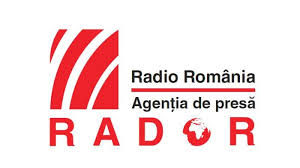Financial experts are keeping a close eye on the inflation rate in these times of economic uncertainty marked by record-high rises in energy, fuel, and, implicitly, most other products. The National Institute for Statistics said the annual inflation rate went up to 10.15% in March from 8.5% the previous month, hitting a two-figure level for the first time since 2004. This was the result of rising prices, with the cost of non-food products going up almost 11% and that of food products by more than 11%, while the cost of services also went up. The cost of bread, potatoes, citric fruits and oil skyrocketed.
National Bank strategy consultant Adrian Vasilescu believes the central bank made a good move when it increased the reference interest rate by 0.50%. He said all central banks and analysis systems in the world reached the same conclusion, namely that this global inflation driven by the energy crisis cannot be addressed with monetary policy measures, but with structural measures. Although the cost of non-food products has somehow stabilised, especially that of electricity, fuel continues to cause high inflation rates, while natural gas maintains its enormous rise of almost 47%, Vasilescu also said. What’s certain is that the annual inflation rate is now higher than the forecast, with the two-figure level of 11% only estimated to be reached in April. Vasilescu blames this on the energy crisis. The inflation may rise even further, as a result of the war in Ukraine, which threatens energy prices everywhere and makes predictions difficult.
In another development, finance minister Adrian Câciu said the package of social and economic support measures announced recently is mainly aimed to support the economy and maintain jobs so as not to aid the rise in the inflation rate, but to inhibit it. He responded to fears that some of the social measures included in this package may drive inflation even higher. Câciu said this economic model adopted by the government is a means of slowing down the rise in the inflation rate, as was also the case with an emergency order capping energy prices.
The National Bank of Romania is expecting the inflation rate to hit 11.2% at the end of the second quarter of 2022, 10.2% at the end of the third quarter and 9.6% at the end of the fourth quarter of the year, according to its quarterly report on inflation. The National Bank has warned, however, that the estimated trajectory of the annual inflation rate is influenced significantly by the future prices of energy products, around which there is a lot of uncertainty.
Ştefan Stoica, Radio Romania International











